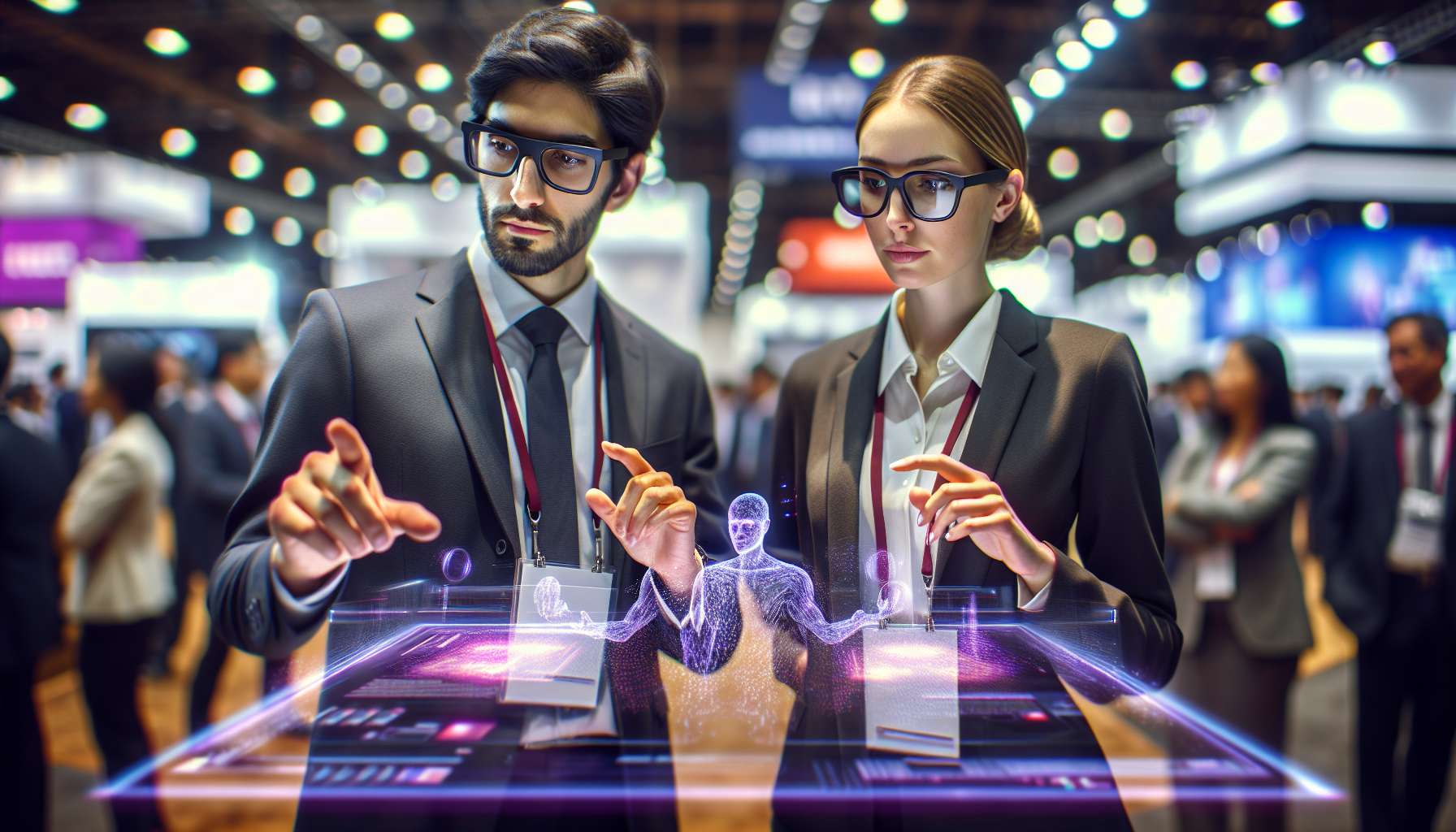Transforming Trade Shows with Augmented Reality and AI
Trade shows have long been a staple in the business world, providing a platform for companies to showcase their products and services to a targeted audience. However, in today’s fast-paced and technology-driven landscape, simply setting up a booth and handing out brochures may not be enough to make a lasting impact. This is where the power of augmented reality (AR) and artificial intelligence (AI) comes into play.
What is Augmented Reality?
Augmented reality is a technology that overlays digital information onto the real world, enhancing our perception and interaction with our surroundings. By using a smartphone, tablet, or specialized AR glasses, users can experience a blend of virtual and real-world elements in real-time.
Imagine attending a trade show where instead of just looking at static displays, you can interact with virtual models of products, explore 3D visualizations, and even try out prototypes without the need for physical samples. AR brings a new level of engagement and interactivity to trade show experiences, capturing the attention of attendees and leaving a lasting impression.
The Role of AI Assistants
AI assistants, on the other hand, are intelligent software programs that can understand and respond to human interactions. These assistants leverage natural language processing, machine learning, and other AI technologies to provide personalized and context-aware assistance.
At trade shows, AI assistants can be deployed to guide attendees through the event, answer questions, and provide relevant information about exhibitors and their offerings. By analyzing attendee preferences and behavior, AI assistants can also recommend specific booths or sessions that align with their interests, maximizing their overall experience.
Maximizing Trade Show ROI
So, how can businesses leverage AR and AI to maximize their trade show ROI? Here are a few key strategies:
- Interactive Product Demonstrations: Instead of relying solely on physical samples, use AR to create immersive product demonstrations that allow attendees to visualize and interact with your offerings in a virtual environment. This not only captures their attention but also helps them understand the value and benefits of your products.
- Virtual Showrooms: Create virtual showrooms using AR technology, enabling attendees to explore your entire product catalog in a digital space. This eliminates the need for transporting physical inventory and allows for customization and personalization based on individual preferences.
- AI-Powered Lead Generation: Deploy AI assistants to collect attendee information, qualify leads, and provide personalized follow-ups. By leveraging AI, businesses can streamline the lead generation process, ensuring that valuable connections are not lost in the hustle and bustle of a busy trade show.
- Real-Time Analytics: Utilize AI-powered analytics tools to gather real-time data on attendee engagement, booth traffic, and overall event performance. This data can help businesses make informed decisions, optimize their trade show strategies, and measure the effectiveness of their AR and AI initiatives.
Success Stories and Future Outlook
Several companies have already embraced AR and AI at trade shows with remarkable results. For example, a leading furniture manufacturer used AR to showcase their products in a virtual environment, resulting in a 30% increase in booth traffic and a significant boost in sales. Another software company implemented an AI assistant that provided personalized recommendations to attendees, leading to a 50% increase in qualified leads.
The future of trade shows is undoubtedly intertwined with AR and AI. As these technologies continue to evolve, we can expect even more innovative applications and enhanced experiences. From virtual reality-powered simulations to AI-powered chatbots, the possibilities are endless.
Conclusion
Trade shows are no longer just about setting up a booth and hoping for the best. By harnessing the power of augmented reality and AI assistants, businesses can create immersive, interactive, and personalized experiences that leave a lasting impact on attendees. Whether it’s through interactive product demonstrations, virtual showrooms, AI-powered lead generation, or real-time analytics, the combination of AR and AI is revolutionizing the trade show landscape. So, if you’re looking to maximize your trade show ROI and stand out from the competition, it’s time to embrace the power of AR and AI.





